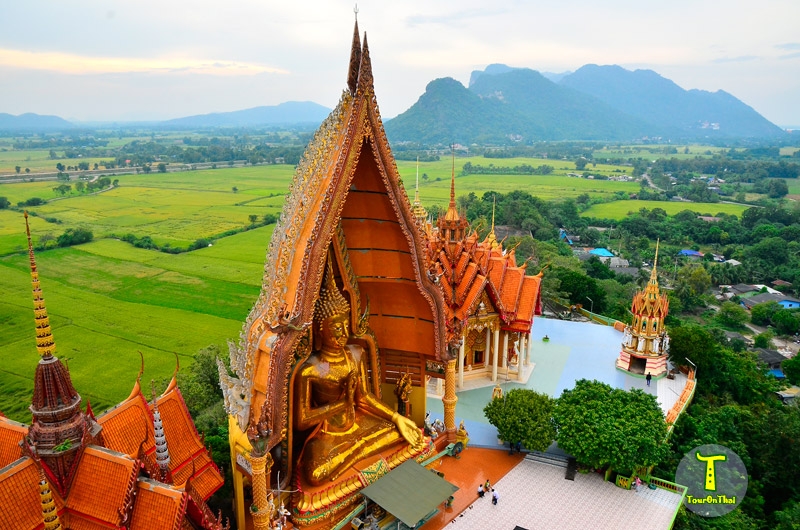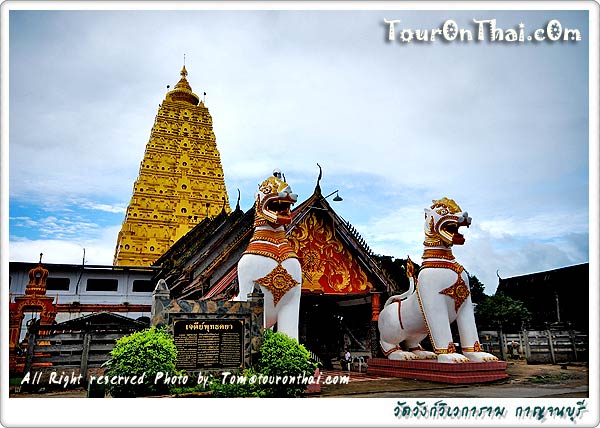www.touronthai.com
Kanchanaburi Attractions
 More Info Here
More Info Here
Because of its magnificent landscape and charming beauty, Kanchanaburi has become a major tourist destination, with attractions including several well-known waterfalls, caves that were once inhabited by Neolithic man, pristine national parks, tranquil rivers, virgin forests, and several large reservoirs. Together, these attractions offer an intriguing experience for both first-time and repeat visitors. Whether it’s fishing, rafting, canoeing, mountain biking, bird-watching, star-gazing, golfing, elephant and jungle trekking, or even living in a bamboo raft, Kanchanaburi takes pride in offering them all.In north and west Kanchanaburi, the terrain is comprised mainly of mountains and high plains, with the Thanon Thongchai Range acts as a natural border between Thailand and Myanmar. The range is the source of Kanchanaburi’s two most important rivers Maenam Khwae Noi (Little Kwai River) and Maenam Khwae Yai (Big Kwai River), which form the famous Maenam Mae Klong. As a result of these major rivers and three of Thailand’s largest reservoirs, Kanchanaburi features several of Thailand’s largest Namtok (waterfalls) as well as a number of wildlife sanctuaries.The most defining natural attractions in Kanchanaburi is arguably the Three Pagodas Pass, a break in the Thanon Thongchai Mountain Range that divides Thailand and Myanmar. Along an overland trade route from India, it is through this pass that Buddhism was thought to first to arrive in Thailand around the 3rd century. The province and its pass were later controlled by the Khmer of Angkor in the 13th century, who built a fort there ( a Khmer temple from the time has been restored as a tourist attraction). The kingdom of Ayutthaya also built a military garrison in the area, though it was through the pass that the Burmese frequently swept into Siam and eventually razed the capital of Ayutthaya. In World War II, the Japanese built a railway through the pass using forced labor, including western POWs. Later known as the Death Railway, the line included an infamous bridge crossing the Kwai River that was the subject of a historically inaccurate academy award winning film. The Three Pagodas Pass area is also home to numerous hill tribes and other minority groups who reside in the area as nation-less refugees without citizenship in either land. For visitors, it is possible to get temporary one-day visas to cross the border for a sneak peak at Myanmar and do some shopping for exotic souvenirs. The city of Kanchanaburi is located at the point where the Khwae Noi and Khwae Yai Rivers meet and form the Maenam Mae Klong. The notorious Death Railway passed through the town, near which stands the site of the Bridge on the River Kwai. Nearby the reconstructed bridge are monuments including an Allied War Cemetery and a war museum. In economic terms, Kanchanaburi has been prospering for a number of years. Important industries include sugar, agricultural products, and jewelry. Tourism is also a main source of income for the locals, though most are engaged in agricultural activities. The province’s population is made up of Thai, Mon, and Karen peoples, most of whom are rural dwellers who enjoy living simply and respecting nature. Moreover, folk music and dances dating back at least 500 years are still performed to this day. Only two hours from Bangkok, Kanchanaburi is accessible by road or rail, the latter of which includes sightseeing day trips that run on weekends and public holidays; these weekend special trains are reasonably priced and make hassle free and enjoyable adventures. Even the climate of Kanchanaburi, cooled by the altitude, forests, and rivers, is a welcome respite from the heat and congestion of the nearby capital city.
Kanchanaburi city, the capital of Kanchanaburi Province, is a popular resort town; picturesque and worthy of a visit in its own right, it is frequently visited as base of operations for exploring the many cultural, natural, and historical attractions in the surrounding countryside. Located at the confluence of the Kwai Noi and Kwai Yai Rivers, Kanchanaburi lies at the source of the Mae Klong River, and these majestic bodies of water are defining characteristics of the town. The original town of Kanchanaburi was established by King Rama I as a first line of defense against the Burmese, whom he believed might use the old invasion route through the Three Pagodas Pass at the Siam-Myanmar border. According to most historians, the old town of Kanchanaburi was located near Ban Lat Ya, a small village situated approximately 16 kilometers north of the present town. The present provincial capital is a relatively newer town built by King Rama III in 1833. The town itself is a place to relax, watching the water from the banks of the river, inside a raft house, or from a riverside restaurant. Many visitors like to rest along the river with a cold drink and a good book. Many of them come here just for a couple days but stay for weeks in order to explore all of the attractions in the surrounding countryside. Along with visiting spectacular waterfalls, lush forests, and three of Thailand’s largest reservoirs, white water rafting, elephant trekking, and golfing are popular activities for visitors. Kanchanaburi is an excellent tourist destination for nature lovers.

Perhaps the best known attraction of Kanchanaburi, featured in world’s famous book and film, The Bridge on the River Kwai is part of the infamous Death Railway, spanning over Kwai Yai River, built by...
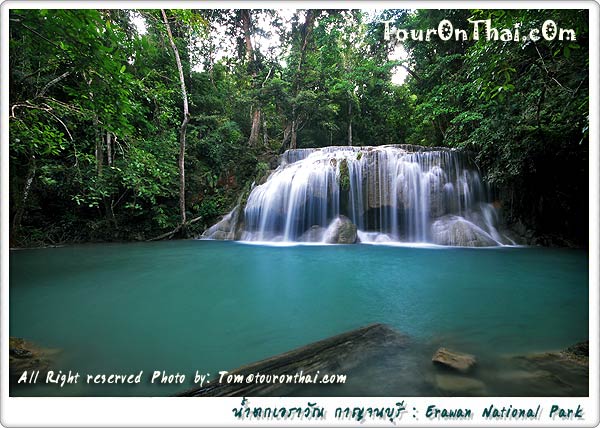
Erawan National Park The national park is 65 kilometers from Kanchanaburi along Route 3199. The park, covering 550-square-kilometers, is the site of the seven-tiered Erawan waterfall, one of Thailands...

Giant rain tree that we are showing here is the most biggest rain tree that we ever found in Thailand at this time, we haven't find any bigger than this one. The tree is inside the Royal Thai Army’s D...

Hellfire Pass Interpretive Centre
Known among locals as the Museum of Chong Khao Kad, it is a part of the Death Railway that was built cruelly by prisoners of war during the World War II. Hellfire or Chong Khao Kad is spot where the r...
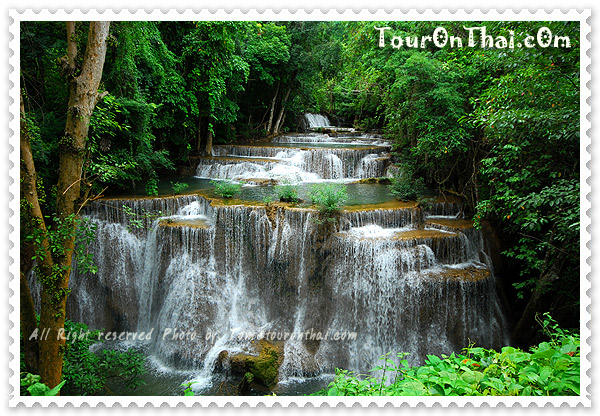
Huai Mae Khamin Waterfall (Namtok Huai Mae Khamin) A major attraction very popular in Sri Nakarin National Park is this lovely seven-tiered waterfall, which is conveniently accessible by foot via a tr...

Krasae Cave - the Death Railway
Krasae Cave was once where POWs rest as it’s located right next to the Death Railway. It is now a popular spot for visitors who take a walk on the railway and would stop by to pray toward a Buddha ima...

Safari Park Open Zoo&Camp Kanchanaburi
It is a nature theme park, a tourism attraction, and is the most important animal breeding centre in Kanchanaburi. You can see a wide variety of animals for example, camels, tigers, lion...
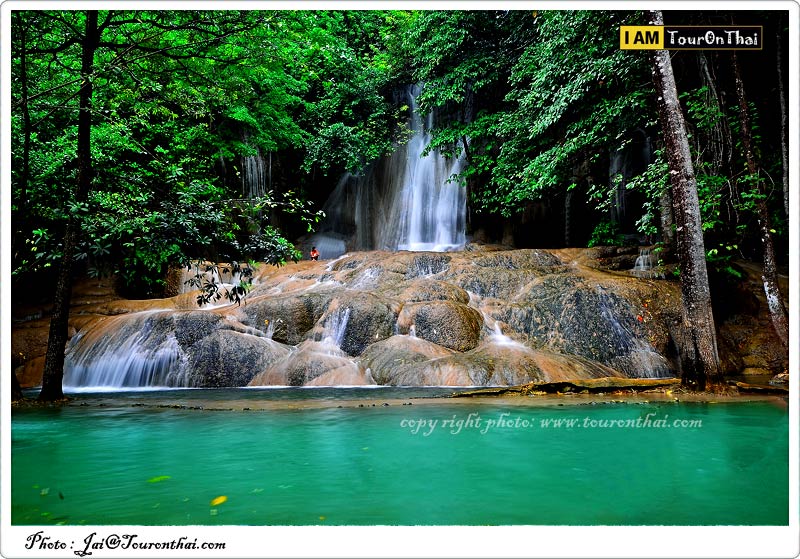
Sai Yok Noi Waterfall (Namtok Sai Yok Noi) is also dubbed as Khao Phang Waterfall located in the area of Erawan National Park at Tambon Tha Sao, Amphoe Sai Yok, 60 kilometers from Kanchanaburi town vi...

Sao Hin Cave - the World Tallest Natural Rock Column
Lam Klong Ngu national park is situated on an approximate area of 375,000 Rai or 600 square kilometers and covers a second plot of conserved forest of Khao Pra Rusi in Thong Pha Phum district. The nat...
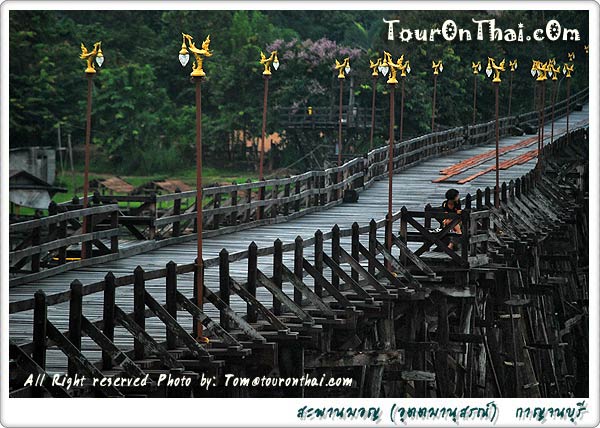
The Wooden Bridge at Sangkhlaburi (Mon Bridge)
Stroll along the country’s longest Mon wooden bridge in Sangkhlaburi, Kanchanaburi province.To come and witness this with your very eyes is worth more than a thousand words. It is the longest wooden b...

Thong Pha Phum National Park, Located within the area of Pa Huai Khayeng and Pa Khao Chang Phueak reserved forests covering a total area of approximately 700,000 rai, some 60 km. to the west of Amphoe...

Underwater Ancient Temple (Muang Badan)
Underwater Ancient Temple (Muang Badan) Unseen Thailand “Underwater City” or “Wat Wang Wirekaram Kao” is one of the well-known tourist sites of Nongloo Sub-District, Sangklaburi District, Kanchanaburi...

Wat Phothisat Banphot Nimit (วัดโพธิสัตว์บรรพตนิมิต) is situated at Tambon Nong Ya. This temple is in the Lanna style since Khruba Bunkhum Pasanno, the abbot who was a disciple of ...





















